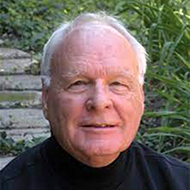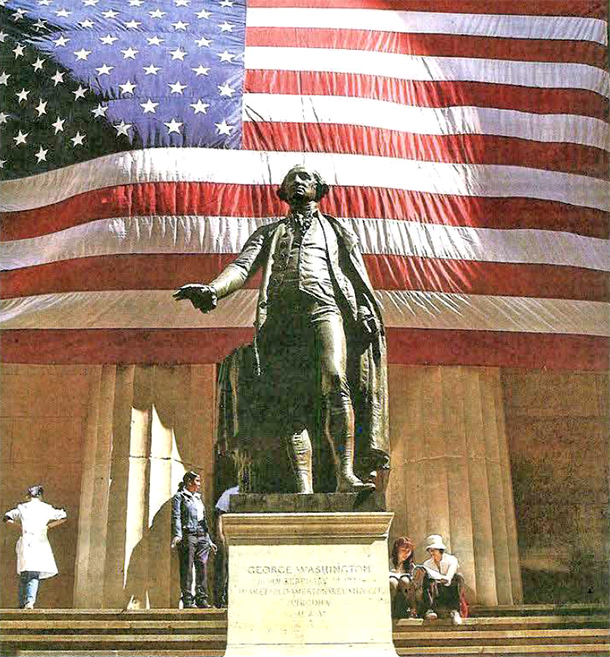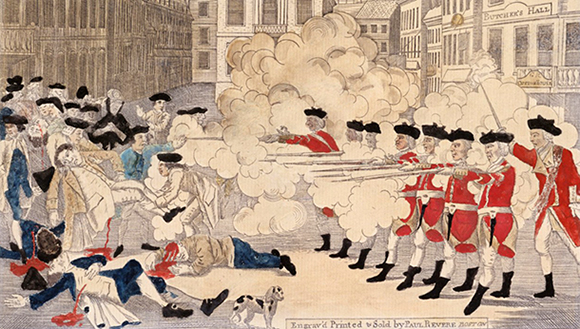Class News
Timothy Breen ’64 on disputed origins of the American Revolution
January 14, 2022

Timothy Breen ’64 wrote a review of three books on the American Revolution. The review was published in The Times Literary Supplement. The review was titled:
“Life, liberty for all?: Historians debate how we tell the story of American independence.”
Timothy’s three-book review was the cover story of the January 14 issue of The Times Literary Supplement.
Timothy’s review expanded on many of the themes he discussed in the Yale ’64 Authors Book Club II on January 12, 2022, which featured his book The Will of the People: The Revolutionary Birth of America.


Land of sweet liberty?
T. H. Breen on the disputed origins of the American Revolution

“The Boston Massacre,” engraved by Paul Revere from a drawing by Henry Pelham, 1770
Life, liberty for all?
Historians debate how we tell the story of American independence
LIBERTY IS SWEET
The Hidden History of the American Revolution
WOODY HOLTON
779pp. Simon and Schuster. $37.50
THE CAUSE
The American Revolution and its Discontents, 1773-1783
JOSEPH J. ELLIS
375pp. Liveright. £23.99 (US $30)
POWER AND LIBERTY
Constitutionalism in the American Revolution
GORDON S. WOOD
228pp. Oxford University Press. £18.99 (US $24.95)
AMERICANS ARE STILL FIGHTING the Revolulution. The English need not be alarmed. The dispute over the political origins of the United States is largely a domestic affair. It is tempting to dismiss the raucous controversy simply as an academic squabble, but in recent days the argument over the meaning and character of the events that brougbr forth independence and the US Constitution has spread to a much broader forum. Local school boards argue passionately over how children should be taught about the Revolution. ls it enough to frame the founding story around the actions and ideas of a few celebrated leaders, they ask, or shou]d the narrative include groups often absent from traditional historical accounts — African Americans, Indigenous people, and women?
The debate over the country's origins has merged with a growing concern about race and racism. The publication by The New York Times of the “1619 Project,” for example, which among other things claimed that many white Americans supported independence as a way to protect slavery, has sparked angry rebuttal. In this contentious atmosphere, it is perhaps no surprise that the New York City Council voted to remove a statue of Thomas Jefferson from its chambers. However inspiring his words in the Declaration of Independence may have been, he owned enslaved people, and that fact forever compromises his reputation. Similar controversies are playing out in many other places, fueling the bitterly partisan political divisions that are eroding the bonds of civil society.
The revolutionary history that defenders are so eager to preserve is familiar to most Americans. It is the story they learn in school. The central characters are the so-called Founding Fathers — a list that includes George Washington, John Adams, Thomas Jefferson, and James Madison — who drafted the key documents that not only energized resistance to Great Britain but also brought forth a new constitutional order that endures to this day. They were men of vision, imagination, and courage. Most important, they gave voice to liberty at a moment when it seemed most threatened.
This is the basic revolutionary narrative. There have been dissenters, of course. Historians focusing largely on the military and intellectual developments of the revolutionary period have advanced much more nuanced accounts, but they generally agree that there is no justification for blaming the Founders for their failure to address the social issues that many modern Americans find so objectionable.
To do so is anachronistic. After all, the men who achieved national independence and organized a new constitutional republic lived in a world that accepted slavery. They did not welcome women into the political sphere. They viewed Native Americans chiefly as a terrifying frontier problem. Gordon S. Wood, a highly respected historian of the period, expressed irritation that anyone today would fault the revolutionary leaders for what they did not do. In The American Revolution, A History (2002), Wood insisted that criticism of this sort suggests "a threshold of success that no eighteenth-century revolution could possibly have attained." Perhaps contemporary expressions of disappointment, Wood writes, "tell us more about the political attitudes of the historians who make such statements than they do about the American Revolution.”
Woody Holton will have none of it. His marvelously creative new book offers a welcome interpretation of the American Revolution for our time. He boldly announces his agenda on the cover of Liberty is Sweet. It depicts a violent wartime scene. An American is pointing a gun at two British soldiers on horseback. Look at the picture closely, Holton urges. What is going on here? The unexpected answer turns out to be that the American is in fact a woman who supported the Revolution in South Carolina.
Holton’s point is not that her participation in the war was an anomaly, but rather that women — indeed, all Americans who have been rendered invisible in traditional accounts — should appear as genuinely significant characters in the historical narrative. This is not a smooth teleological account of revolutionaries fighting for independence and then ratifying the Constitution. To be sure, Holton gives the traditional political actors their due; the Founding Fathers are included. But he adds complexity to the story, so that we encounter not only the heroic moments of war and diplomacy, but also the disappointments, betrayals, and unintended consequences of the revolutionary experience. As he notes, in the United States “the mythologization of the founding rebels has played out as a revolt against complexity.”
Holton's interpretative strategy is perhaps most clearly revealed in his treatment of the West, the vast territory from the Appalachian Mountains to the Mississippi River that Britain acquired after the Seven Years’ War. A formidable number of Indigenous people occupied the region — not just an undifferentiated group but, as Holton reminds us, tribes with specific names and deep histories. This was the home of Senecas, Shawnees, Mingos, Delawares, and Chippewas — to name just a few — and they made it clear that they were prepared to resist white settlers eager to claim western land. In an effort to prevent further conflict between British colonists and Natlve Americans, officials in London authorized maintaining 10,000 soldiers in America.
The military commitment cost a lot of money. In 1763, the Earl of Bute, the First Lord of the Treasury, concluded that the King's colonial subjects should help foot the bill. The decision created a firestorm of protest. The Stamp Act (1765) sparked major urban riots. American historians have general)y blamed the unprecedented demand for new sources of revenue on the need to reduce Britain’s huge national debt accrued during the Seven Years’ War. Holton rejects that explanation, arguing persuasively that it was the decision to separate the Native Americans from the settlers and speculators that necessitated the introduction of new colonial taxes. The Indigenous peoples were not passive victims of imperial policy. Had they not forcefully resisted encroachment, there would bave been no need for Parliament to fund an expensive army. From this perspective the tribes become important actors in the history of the American Revolution. As Holton explains, “actual First Nation warriors played a crucial if indirect role in giving birth to the Stamp Act.”
Holton also successfully weaves the experiences of African Americans into a larger, more inclusive history of the American Revolution. Independence provided unexpected opportunities. We know that Blacks liberated themselves from slavery by fleeing to areas controlled by the British Army. They also foughc for the Americans. Whatever strategies they adopted, their overriding interest was always freedom. Like the revolutionaries who wanted to keep them in bondage, African Americans responded creatively to the revolutionary call for liberty. And by so doing, they stirred racist fears that they might turn on the whites. It was hard to ignore this potential threat. One fifth of the total population of the country at the time of independence was Black and unfree.
In Virginia, the numbers were even more disconcerting for the colonists. The colony had a Black population of 131,000 out of a total of 328,000. In a society riven by racial anxiety, Lord Dunmore, the last royal governor of Virginia, made a series of extraordinary decisions. In 1775, he organized Blacks who had escaped slavery into the Ethiopian Regiment, a unit intended to support the loyalist cause. And then, in November, he issued an emancipation proclamation that awarded freedom to enslaved Virginians who supported Great Britain. Blacks owned by white loyalists were excluded from the offer, but the proclamation brought impressive results. As many as a thousand enslaved Virginians took up Dunmore’s invitation. Not surprisingly, the governor’s actions incensed white planters who condemned his “Damned, infernal, Diabolical proclamation.”
Holton does not claim that Dunmore’s appeal to enslaved people persuaded leading white Virginians to support independence. However, it was undoubtedly a major factor. If such a large number of Blacks had not responded to Dunmore’s offer, the proclamation would not have mattered. But they did. Their actions reinforced the commitment of frightened whites to the Revolution. Holton claims “no other document — not even Thomas Paine’s Common Sense or the Declaration of Independence — did more than Dunmore’s proclamation to convert white residents of Britain’s most populous American colony to the cause of independence.”
This provocative and timely account of the Revolution raises difficult questions. Did independence really matter? For all the rhetoric about rights, liberty, and equality, did American society change in ways that might now inspire pride? Holton does not see much reason to celebrate the nation’s founding. After the Country won independence, slavery took deep roots throughout tbe South, and it required a bloody civil war to free the Blacks from bondage. The peace treaty awarded the western lands to the United States. White settlers quickly overran the Indigenous peoples who lived there. Women made little progress despite their participation in revolution. Still, he insists a more honest history is worth the effort. “Flattering and flat celebrations of the Founders often proceed from a laudable desire to instill patriotism in the young,” he concludes, “but they have always seemed more appropriate to authoritarian regimes, and they have slandered history by making it dull.”
No one would accuse Joseph J. Ellis of making history dull. He is a masterly storyteller. His perspective on the Revolution, however, is very different from Holton’s. Ellis frames the revolutlonary narrative around a small group of leaders. George Washington receives the most attention. We follow his development from a parochial Virginia planter to a courageous — often overly aggressive — military commander, whose strength of character repeatedly saved the new republic from disaster.
Washington embodied what Ellis calls somewhat awkwardly the “Cause.” The meaning of the term evolved over the course of the war, but for Ellis it seems to capture the uncompromising commitment of men such as Washington to national unity. Without cooperation among the states, Ellis reminds us, it would have been impossible to achieve independence. No doubt the key Founding Fathers — at least, those who did not come from South Carolina or Georgia — saw slavery as an embarrassment. They hoped that it would die out. But not now. Not during the Revolution. A radical reform of this sort would only weaken the bonds of nationhood. Political pragmatism outweighed social justice. In The Cause, Ellis counsels modern Americans to avoid “presuming that the revolutionary generation is a fixed object against which we do our politically correct isometric exercises.”
Gordon Wood — like Ellis, a Pulitzer prizewinner — argues that we should appreciate more fully the Founders’ extraordinary ability to reimagine the foundations of political power. It is an uplifting story well told. In clear jargon-free prose, Power and Liberty traces how Americans cballenged English ideas about an unwritten Constitution and parliamentary sovereignty. In the process of moving from a monarchy to a republic, they discovered that the people are the source of all political authority.
During the war years when the various states were writing constitutions, the revolutionaries pushed too far in a democratic direction. Fearful of executive control, they turned governors into figureheads and transferred meaningful decision-making to legislatures often dominated by men less wealthy and less educated than were national leaders such as Washington, Adams, and Jefferson. The results of this experimentation were chaotic. With an eye on the immediate demands of their constituents, the local politicians passed laws favouring debtors over creditors. Most worrisome was their willingness to print huge amounts of paper money that destabilized the economy. But in time the country pulled back from a momentary excess of democracy and under the sage guidance of innovative political theorists such as Madison and Hamilton, Americans established a strong federal system of constitutional government. Of course, as Wood admits, the Founders made mistakes. The Constitution of the United States curtailed democracy and compromised with slavery. But it also contained a Bill of Rights that many Americans still regard as the Revolution's greatest achievement.
Why would anyone fault this impressive record? After all, as Wood explains, “the Revolutionary era was the most creative period of constitutionalism in American history and one of the most creative in modern Western history.” People today who criticize the Revolution miss the point. They do not grasp that “Americans look back to the eighteenth-century revolutionaries and the constitutions and documents they wrote wtth a special awe and respect.”
Wood ends his book with a curious epilogue that comes as a surprise after surveying the impressive accomplishments of the revolutionary generation. He provides a short history of Rhode Island. For people such as Madison and Washington, Rhode Island was a state where everything had gone wrong. Legislators who cared only for economic well-being of their neighbours authorized the printing of vast amounts of paper money. Debtors forced honest creditors to accept the nearly worthless currency. Throughout the nation, Rhode Island became a symbol of fraud. And to make it worse, the people who lived there were not in the least apologetic. They were slow to ratify the Constitution. All they wanted was capital for investment.
However self-absorbed the Rhode Jslanders may have been, their state’s economy did very well, and during the nineteenth century it became a centre for entrepreneurial innovation. Its citizens filed more patents “than in almost any other place in the English-speaking world.” It attracted “wave after wave of immigrants from Ireland, Canada, Italy, and elsewhere.” The pariah state had given birth to a prosperous middle-class society. 8ut, according to Wood, there was a problem. Along the way, Rhode Island had lost a sense of the virtuous political order that the Founders had envisioned. “Rhode Island had a flourishing economy,” Wood writes, “but its politics were as corrupt as ever. Bribery, electoral fraud, and sleaziness were rampant and seemed always to have existed.” It is not clear how we are supposed to interpret this story. Did the United States become Rhode island? And is that something we should lament?
Although Holton and Wood advance very different interpretations of the American Revolution, they share a sense of disappointment. The founding event either betrayed African Americans and Indigenous peoples or it promoted an unattractive, sleazy world that took political corruption for granted. Their work invites another conclusion. It is true that revolutionaries did not transform American society. They kicked a lot of cans down the road. But almost all the people who appear in these books responded enthusiastically to the rhetoric of revolution. The declaration that all men are created equal has echoed down through the generations, always more hope than accomplishment, but a motivating force nonetheless.
lt is good to be reminded that the Founders did not fulfill the promise. Perhaps it was impossible for them to do so. But we can do better. Although the past may be a tale of failure, we have a burden of responsibility to turn the rhetoric of rights, equality, and liberty into social and political reality. In his “I have a dream” speech, Martin Luther King, Jr. called the Declaration of Independence a “promissory note.” King insisted, “This note was a promise that all men — yes, black men as well as white men — would be guaranteed the ‘unalienable Rights’ of ‘Life, Liberty, and the pursuit of Happiness’.” It is time to renew his revolutionary dream, “that one day this nation will rise up and live out the true meaning of its creed: We hold these truths to be self-evident, that all men are created equal.”

